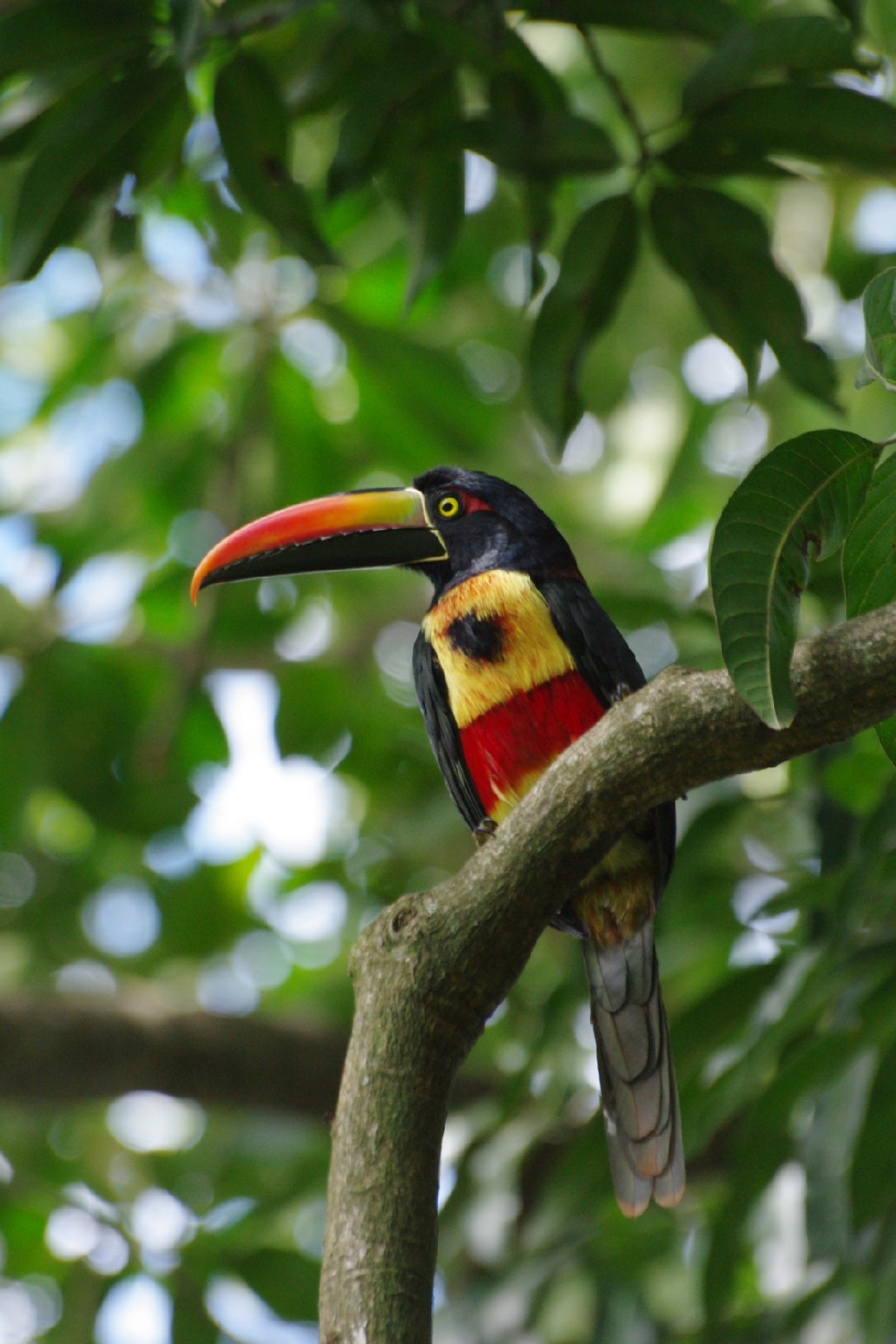Fiery-billed Aracari
A species of Aracaris Scientific name : Pteroglossus frantzii Genus : Aracaris
Fiery-billed Aracari, A species of Aracaris
Botanical name: Pteroglossus frantzii
Genus: Aracaris
Content
Description General Info
Description
Like other toucans, the fiery-billed aracari is brightly marked and has a large bill. The adult is typically 43 cm long and weighs 250 g. The sexes are alike in appearance, with a black head and chest and dark olive green upperparts, apart from a red rump and upper tail. There is reddish collar on the rear neck. The underparts are bright yellow, with a round black spot in the centre of the breast and a red band across the belly. The thighs are chestnut. The bare facial skin is black, becoming ruddy behind the yellow eye. The upper mandible of the bill is bright orange, the lower mandible is black, and the legs are green. Juvenile fiery-billed aracaris are much duller, with sooty-black head and brownish green upperparts. The red rump and yellow underparts are paler, and the breast spot, belly band and bill pattern are indistinct. It differs from the collared aracari in the orange upper mandible, red belly band, and larger dark breast spot. The call of the fiery-billed aracari is a loud, sharp pseek, or keeseek, similar to that of collared, but more often two-noted. 
Size
45 cm
Nest Placement
Cavity
Feeding Habits
Fiery-billed Aracari primarily eat fruits and forage among the vines. They occasionally consume insects, bird eggs, and nestlings, displaying opportunistic feeding behaviors. Unique to their diet is the predation on eggs and young of birds like doves and woodpeckers.
Habitat
Fiery-billed Aracari's native habitat includes the lush, wet lowland forests and secondary forests, as well as forest edges and areas of forest that have been cleared. These birds are less commonly found in foothill forests and lower montane regions, yet they can be observed at elevations up to 1200 meters, and occasionally sightings are reported up to 1500 or even 1800 meters.
Dite type
Frugivorous
General Info
Feeding Habits
Bird food type

Fruit
Behavior
Small flocks, usually consisting of up to 10 birds, move through the forest with a rapid direct flight. This species is primarily an arboreal fruit-eater, but will also take insects, lizards, eggs, and other small prey. 
Species Status
Not globally threatened.
